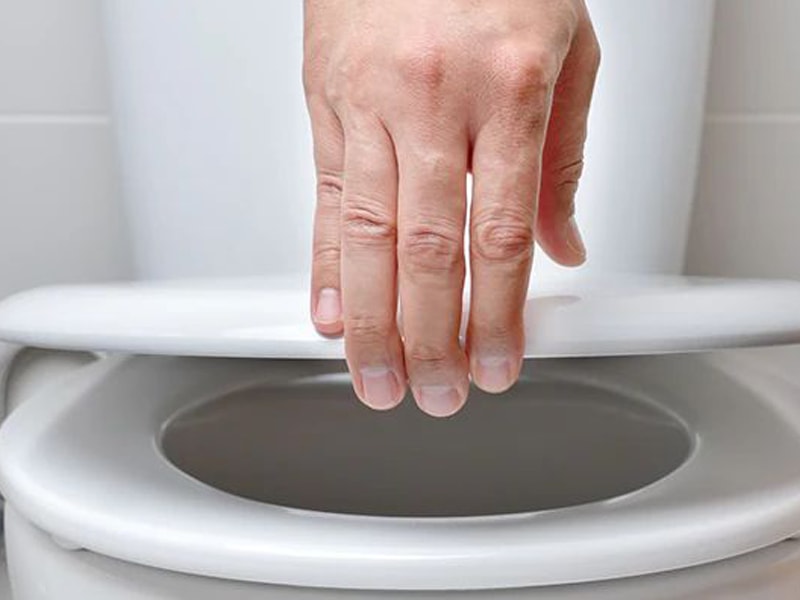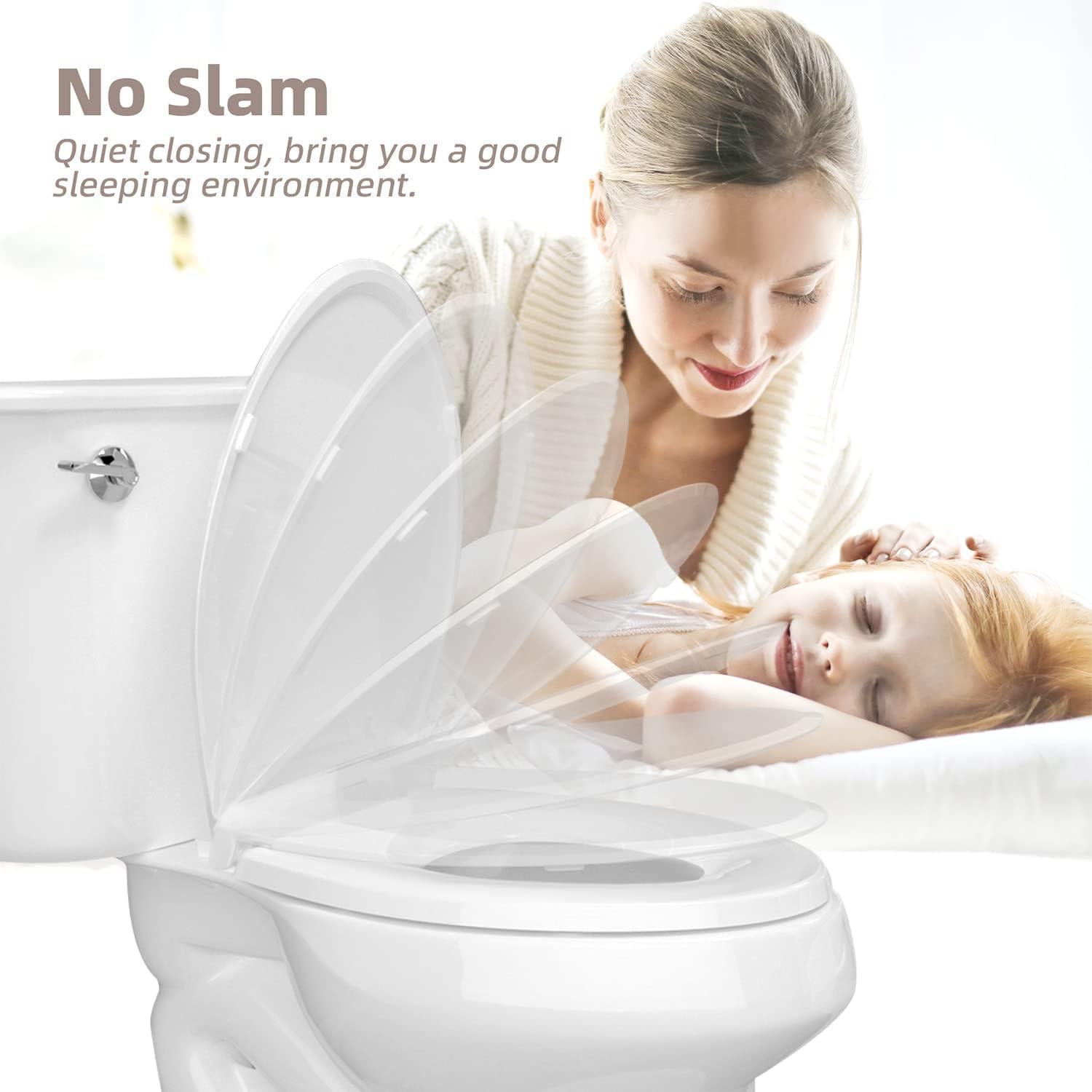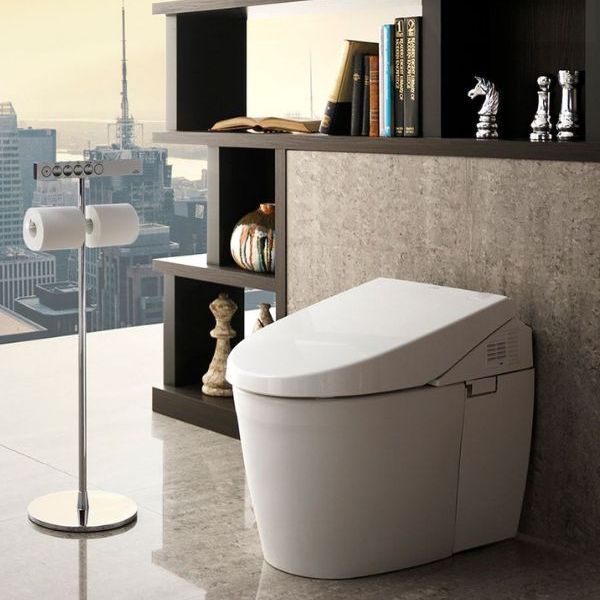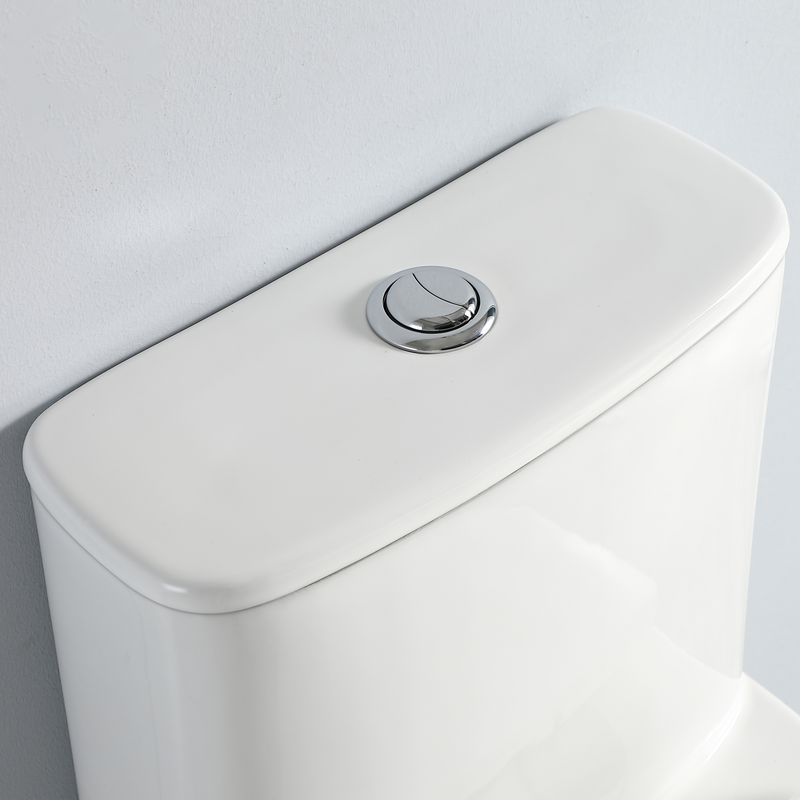 English
English
Jabra Sanitary is a sanitaryware supplier offering toilets, sinks, faucets, bathtubs, etc., at competitive prices. If you're a distributor, wholesaler, or project contractor, get a quote today!
 $23.9 Limited-time Offer
$23.9 Limited-time Offer Consignment Policy
Consignment Policy 20 Years of Experience
20 Years of Experience
When selecting a toilet seat, the toilet seat material is an important factor. The two most commonly used materials nowadays are Urea-Formaldehyde (UF) and Polypropylene (PP). Both toilet seat materials come with different benefits, the key is to understand those differences, to make the appropriate choice.
In this article, we'll delve into the pros and cons of UF and PP toilet seats, guiding you in choosing the best toilet seat material. By comparing PP vs. UF seat covers, we will ultimately answer the question: What is the best toilet seat material?
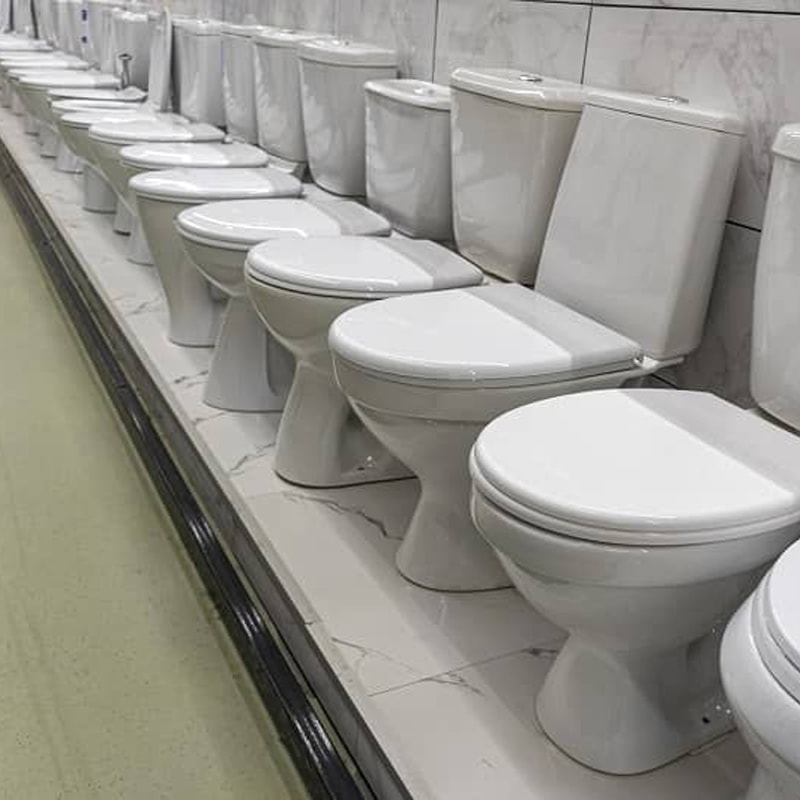
Table of Contents
What Is Urea Formaldehyde (UF)?
UF Pros and Cons
What Is Polypropylene (PP)?
Advantages and Disadvantages of Polypropylene
PP vs UF Seat Cover
The Best Toilet Seat Material
FAQs
Urea-formaldehyde, commonly called UF, is a thermosetting plastic synthesized by combining urea and formaldehyde molecules through chemical reactions.
Known for its hardness and ability to closely resemble the look and feel of ceramic, UF has become a premier toilet seat material choice for deluxe toilet seats across the globe.
Not only used in residential toilet seats, UF can also be found in a wide range of household and industrial goods ranging from resilient adhesives and protective coatings to delicate electrical components.
When evaluating the best toilet seat material, it's essential to weigh the UF pros and cons to understand whether this toilet seat material meets your needs.
Pros:
- Durability and Strength: UF toilet seats are known for their durability. They withstand scratches, stains, and ordinary wear and tear, rendering them a long-term choice.
- Aesthetic Appeal: The glossy, ceramic-like complete of UF seats contributes a contact of sophistication to the restroom, making them a preferred alternative for people in need of a more top-notch appearance.
- Scratch and Stain Resistance: UF's solid surface renders it less at risk of scratches and stains, preserving its visual appeal as time passes.
- Environmental Considerations:UF is biodegradable under particular situations, creating it a more eco-friendly alternative when compared to other plastics.
Cons:
- Potential Brittleness: Eventually, UF materials can become fragile, especially in environments with extreme temperature modifications, main to fractures or separates.
- Environmental Concerns: The production process of UF includes formaldehyde, which has environmental and health worries. Even though the toilet seat material is relatively safe in its final form, the production step raises some issues.
- Higher Cost: UF toilet seats are usually more pricey than their PP equivalents, which may not be perfect for individuals on tight funds.
Polypropylene (PP) is a thermoplastic polymer widely used in various household and industrial applications due to its versatility, durability, and affordability.
In the context of toilet seats, PP offers a flexible and lightweight option that is resistant to chemicals, moisture, and impact. Unlike UF, PP is more pliable, making it less likely to crack under pressure.
This toilet seat material is also popular in the production of items like containers, automotive parts, and textiles, thanks to its impressive strength-to-weight ratio and cost-effectiveness.
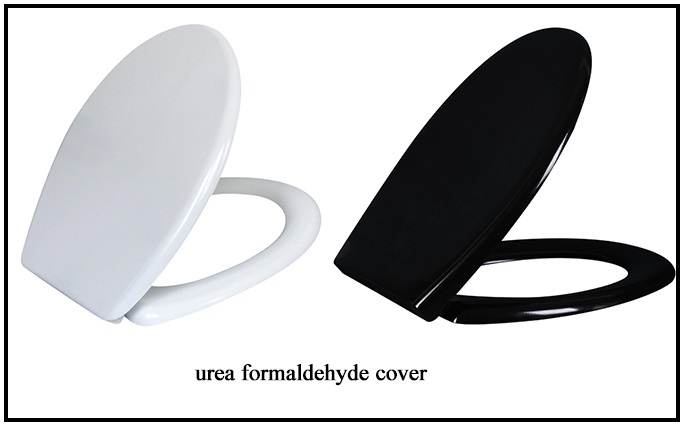
Advantages and Disadvantages of Polypropylene
When considering the best material for a toilet seat, it's important to weigh the advantages and disadvantages of polypropylene below:
Advantages:
- Affordability: PP toilet seats are typically less expensive than UF seats, making them a budget-friendly choice for many households.
- Flexibility and Lightweight: The flexibility of PP makes it less prone to cracking, while its lightweight nature makes installation easier.
- Chemical and Moisture Resistance: PP is highly resistant to chemicals and moisture, making it a practical choice for bathroom environments.
- Durable and Long-Lasting: Despite being lightweight, PP offers good durability and can withstand everyday use without significant wear and tear.
Disadvantages:
- Less Scratch-Resistant: PP is more prone to scratches compared to UF, which may affect its appearance over time.
- Less Premium Feel: PP toilet seats may not offer the same luxurious feel as UF seats, which might be a consideration for those seeking a high-end look.
- Limited Color Options and Finishes: PP typically comes in fewer color options and lacks the glossy finish that UF offers, which might limit aesthetic choices.
While toilet seat cover material PP is durable and affordable, polypropylene disadvantages include being less scratch-resistant compared to other toilet seat materials.
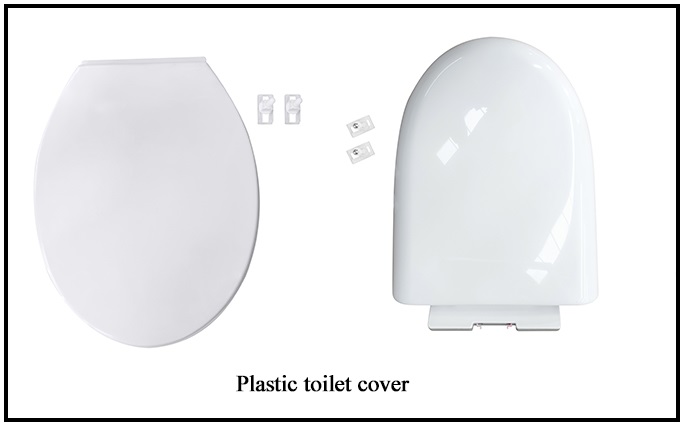
PP vs UF Seat Cover
When it comes to comparing UF and PP Toilet Seats, read about the detailed comparison of the two toilet seat materials and decide which one suits your toilets best.
Durability
- UF: Urea-formaldehyde toilet seats last the longest and are scratch-stain-resistant. But in the case of such spacer girders, they can get brittle with time, especially at high or low temperatures.
- PP: Polypropylene seats are also good but for a different reason. They are also less brittle and will not develop a crack under work hardening.
Aesthetics
- UF: Toilets that use UF seats have a cushioned, ceramic appearance which creates the impression of high quality in your bathroom. They come in many colors and styles making them the perfect option for homeowners who want to improve the look of their bathroom.
- PP: Typically, PP seats are more reserved-looking with a flat finish and basic color choices. The appearance of these seats may not be as attractive as UF toilet seats but they are functional.
Comfort
- UF: The best part about UF seats is that they are firm, so the users would not be rocking when placed on a soft chair. The smooth leather will also add to the comfort level.
- Bottom of pole Up Next: PP seats weigh a tad less, with a bit more flex for potentially plusher effects. Although they are comfortable, I feel like my foot has enough support.
Cost
- UF: UF toilet seats boast a higher price tag owing to their better quality material and finish. So, they are out to be a better choice for anyone who wants to invest in the relevant gear.
- PP toilet seats are usually cheaper and have thus become a popular product for consumers who opt to save money. Although, that does not mean they lack in quality and performance.
Environmental Impact
- UF: Biodegradable Under certain conditions, UF degrades so it's a positive for green consumers. The only hiccup comes from the fact that formaldehyde is used in its production, a toilet seat material with both environmental and health criticisms to go along with it.
- PP: PP is a more resilient plastic and does not contain toxic ingredients such as formaldehyde. The pack that it comes in, on the other hand, is not biodegradable and adds to plastic waste if not recycled effectively.
Maintenance
- UF:Features-Nordeco soft closing toilet seat with UF easy-clean top mounting system makes it easier to clean.
- PP: PP seats are a low-maintenance option to consider, while they may scratch more easily and eventually lose durability.
The Best Toilet Seat Material
What is the best material for a toilet seat? When it comes to choosing the best toilet seat material, both UF and PP have their advantages and disadvantages. If you prioritize aesthetics, durability, and a premium feel, a UF toilet seat might be the right choice for you, despite its higher cost.
On the other hand, if you're looking for an affordable, durable, and easy-to-maintain option, a PP toilet seat offers great value for money.
Ultimately, the best toilet seat cover material depends on your specific needs, budget, and preferences. By considering the pros and cons of each toilet seat material, you can make an informed decision that enhances both the functionality and appearance of your bathroom.
Whether you opt for a UF or PP seat, ensure that you purchase from a reliable toilet brand to guarantee quality and durability. The toilet seat from Jabra Sanitary is an outstanding choice for your bathroom. It comes equipped with an advanced slow-close mechanism, preventing slams and enhancing durability.
The quick-release buttons allow for effortless detachment, making cleaning a breeze. Moreover, the seat is treated with an antibacterial coating, ensuring a cleaner, more hygienic environment. These features combined make the Jabra Sanitary Toilet Seat a superior option for modern households.
FAQs
Is urea-formaldehyde better than plastic?
Urea-formaldehyde (UF) is a type of plastic, but it differs from other plastics like polypropylene (PP) in terms of strength, durability, and aesthetic appeal.
While UF offers a more premium look and feel, PP is often more flexible and affordable, making it a popular choice for many households.
Are toilet seats recyclable?
Toilet seats made of polypropylene (PP) can generally be recycled, depending on local recycling programs.
Urea-formaldehyde (UF) seats are more challenging to recycle due to their complex chemical composition, but some specialized facilities may accept them.
What is the strongest toilet seat material?
Urea-formaldehyde (UF) is often considered one of the strongest materials for toilet seats due to its hardness and durability.
However, polypropylene (PP) offers strength in terms of flexibility and resistance to cracking, making it a strong contender as well.
Which toilet seat material is easiest to maintain?
Both UF and PP materials are relatively easy to maintain. UF seats, with their glossy, non-porous surface, resist stains and odors effectively. PP seats are also easy to clean, although they may be more prone to scratches over time.
Is it worth investing in a more expensive toilet seat material?
Investing in a more expensive toilet seat material like UF can be worth it if you value aesthetics, durability, and a luxurious feel. However, if you're looking for a cost-effective solution that still offers good comfort, PP is a great choice.







